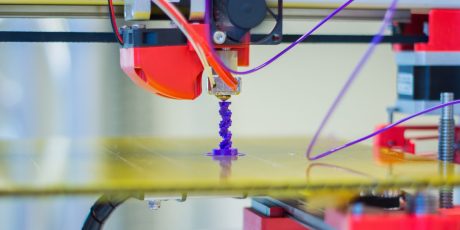
TechTalk: 3D printing – a factory in every home
Imagine being able to print anything you wanted. Fabrics? No problem. Metals and plastics? Easy. Food? Of course…
In the coming decades, 3D printing has the ability to transform business models, supply chains and consumer behaviour.
In this TechTalk blog (to celebrate Global 3D Printing Day, on the December 3rd, no less!) I wanted to explore the areas where 3D printing is poised to impact our lives the most.
A potted history of 3D printing
Let’s start first with some context. It was back in 1984 when Chuck Hall invented the world’s first 3D printer. But it has taken decades of technological advancement before 3D printing has become cheap enough to make it widely commercially viable.
Until recently the technology was used in the automotive and aerospace industries for rapid fabrication (or rapidfab) to create prototypes.
Today we now have the means to print a huge range of materials on demand, so it seems we are only limited by our imaginations…
A factory in every home
Picture a future where you’re able to download any design before printing it off, all from the comfort of your own home. It could be anything from a new part for the dishwasher to fresh pairs of shoes that your kids have outgrown.
For enterprises, larger scale 3D print factories that serve local communities and businesses with bigger orders will also become the norm.
This idea of being able to produce a host of physical goods at home will represent a huge wave of digital disruption that will tear through the transport and logistics space.
Any company currently operating in the supply chain should be bracing for impact. Why pay for goods to be transported across land, sea, or air when you can make all you need in any given local area? In essence, 3D printing represents the next wave of technology democratisation in design and manufacturing.
Could 3D printing help unlock the race to space?
Combining the mix of materials along with any digital CAD designs means the possibilities really are endless.
So much so, 3D printing has been suggested way of building structures on the Moon (and why not Mars?) without the need for humans to be present.
It could mean if we ever wanted a permanent base on another world we could just send the machines off to do the majority of the setting up. It’s the equivalent of having someone else pitch your tent for you at Glastonbury before arriving – except in outer space.
Closer to home, you can see 3D printing having huge benefits in the developing world. Need the parts for a water pump, farming equipment (or even solar panels)? No problem at all.
Mobile 3D print production teams could even be sent off to disaster zones to print shelters and anything else people might need to survive. This is a fantastic example of how a technology can directly improve everyone’s quality of life.
It could save your life one day
Need a new hip? Or how about a freshly 3D-printed kidney? The potential benefit to medicine from 3D printing is huge – and this could have a profound impact on our overall life expectancy.
While advances are being made in growing organs in laboratories, this can currently still be subject to human error. However, a laser-guided computer with 3D printing capabilities would strip this out.
It means intricate (and highly complex) structures can be printed within the scales of microns. And if it’s a new organ you need, it means 3D printing could be a lifesaver.
The future: printing in space and time…
That’s right – printing not just in three physical dimensions, but also across time. 4D printing is on the horizon, and why it’s not strictly a time machine, soon there’ll be applications for printed materials that then assemble into other shapes and structures.
Other super-futuristic use cases include combining it with nanotechnology (check my last post on this here), where we’ll be able to 3D print tiny batteries to power tiny nanorobots.
With so much potential, the question is: what would you print?
Tags:


